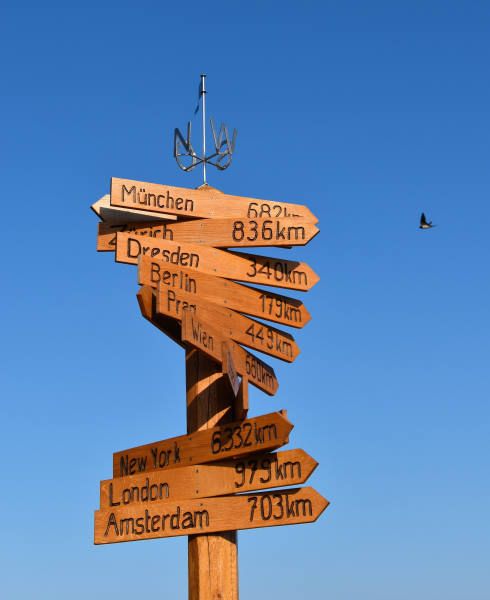Who doesn’t dream of exploration? Who doesn’t want to get away from their routine for a while? Sip a cocktail on a heavenly beach under the Caribbean sun, go on an exotic road trip on the American west coast, explore the remote regions of Indonesia… But when it comes to buying your plane ticket or renting your car, you may be caught up in your ecological conscience. Yes, the carbon footprint of our travels is far from pleasant. However, there are alternatives for offsetting its carbon footprint on holiday! Many companies are getting into the booming business of offering travellers the chance to plant trees to offset the harmful effect of their travel’s greenhouse gas emissions. But is voluntary carbon offsetting really a miracle solution? Are the expected effects really there? In this article, we try to decipher the details of this phenomenon and give you some advice on how to become an offset expert.
Definition of carbon offsetting
Apparition et origine
The concept of carbon offsetting was introduced in 1997 in the Kyoto Protocol. This new system allows companies to finance projects whose aim is to reduce greenhouse gas emissions. In exchange, they receive carbon credits allowing them to pollute. Since then, the system has expanded and voluntary carbon offsetting has appeared. Any individual who wishes to do so can do the same, for example, to offset a plane trip or a recent road trip by car.
The different ways to offset its carbon footprint
What projects are usually funded? You might think of all the tree-planting programmes. But there are also other ways to offset your greenhouse gas emissions.
Some projects also address the causes that lead to deforestation and biodiversity loss. For example, you can fund :
- agroforestry and regenerative agriculture projects. This is the idea behind the Carbo initiative in western France, for example;
- projects to provide access to drinking water or improve the quality of life in developing countries. For example, Greentripper allows you to finance a programme for access to drinking water in Rwanda. This means that local people no longer need to boil water with wood to purify it, which limits deforestation in the region.
While reforestation-related projects are widespread because they are easier to implement, other initiatives also aim to develop renewable energy, reduce the use of fossil fuels or improve the energy efficiency of buildings. However, at the time of writing we have not found any with a quality label.
What are the greenhouse gas emissions of its holidays?
In 2021, ADEME is publishing a study on emissions from the tourism sector in France. Thus, in 2018, 118 million tons of CO2 equivalent were emitted in France by tourist activity. To give you an idea, this still represents 11% of total greenhouse gas emissions in France, for only 7.4% of the country’s GDP.
So, what positions can you personally take action to compensate for your personal vacation? Emissions from the tourism sector are broken down as follows:
- 77% are related to traveler mobility;
- 7% is caused by purchases of tourism goods;
- 7% are due to accommodation;
- Catering contributes 6% programs.
- Finally, the few remaining percentages are shared between sports, leisure, culture, management of water, waste and organized events for business trips.
These figures are rather eloquent: it is transport that mainly contributes to the carbon impact of the tourism sector. In addition, air travel and car travel account for nearly 90% of mobility-related emissions.
Fortunately, to limit your personal impact, you can offset the carbon footprint of your travels.

Offsetting its carbon footprint on vacation: instructions
Compensating for the ecological impact of your holidays seems simple on paper. You go to a Travel Carbon Footprint Calculator, pay for it, and voila! Only, pushing the reflection a little further, several questions arise:
- How to reliably calculate CO2 emissions?
- How to evaluate the price in currency of CO2?
- Which project to support?
Calculating the carbon footprint of your mode of transport: not so simple
When it comes to measuring the impact of your mode of transport on vacation, the question is more complicated than it seems. If you look carefully at the carbon offset programs, you will see that it is rather the notion of CO2 equivalent that is mentioned. Indeed, according to ADEME, the carbon balance of a means of transport has multiple causes:
- CO2 directly emitted by the production of electricity and fuel, as well as by the combustion of the latter;
- other compounds released into the atmosphere during combustion and contributing to global warming: water vapour, nitrogen oxides, etc;
- for aircraft, contrails which contribute to radiative forcing and warm the atmosphere.
This last parameter for aviation is the most difficult to measure reliably. For the moment, ADEME recommends doubling the emissions due to combustion, but this is still a rather vague approximation. Thus, for the consumption of a round trip Paris-New York plane in Economy class, CO2 My Climate gives 1.9 t of CO2 equivalent while Greentripper indicates 2.11 t.
To go further on the ecological impact of aviation, which is so debated, discover our special feature on responsible travel and airplanes.
How much is 1 tonne of CO2 worth?
Again, hard to say. How to assess the monetary value of a ton of CO2? If you look at different calculators, the prices are quite variable from site to site.
Thus, to compensate for your direct Paris-New York round trip, Greentripper offers to pay between €25 and €38 depending on the project supported, while CO2 My Climate charges between €47 and €154, for example.
Greentripper indicates on its website that the price per tonne of CO2 varies between €12 and €20 depending on the project supported. Not easy to see very clearly for users.
Support a project without being fooled
Another important aspect to take into account: the projects supported! There are currently no regulations in place in the carbon offset market regarding project monitoring or their proper implementation. Most of the projects are set up in developing countries and ultimately, as consumers, we have very little information about what happens to our money after payment.
Several labels exist, however, and have strict specifications in terms of the merits of the projects undertaken. We therefore advise you to choose carbon offset programs that are based on one of these standards:
- the Gold Standard: an international reference label;
- VERRA’s VCS (Verified Carbon Standard) program;
- the Bas Carbone label for projects implemented in France.
Some carbon offset organizations that offer labeled projects
Here are some examples of organizations that offer offsetting its carbon footprint while supporting labeled projects:
- Greentripper finances projects verified under the Gold Standard label.
- Reforest’Action offers an reforestation project in Normandy labeled Bas-Carbone: a good initiative to plant trees directly in France.
- Carbo participates in VCS-certified projects for reforestation and the development of agroecology in France and Peru.
Planting trees, yes: but not just anyhow!
Let’s now take a look at the reforestation programs, which are legion! The number of companies offering to plant trees to offset their CO2 emissions seems to be increasing day by day. But what is really behind this fabulous ambition to cover the planet with forests?
CO2 storage by trees
Yes, trees store and store CO2, it’s undeniable. The figures speak of between 20 and 30 kg per year . Only, this is an average that does not take into account all the factors involved:
- a young growing tree stores less CO2 than an adult tree;
- the land must be suitable for the species chosen for the tree to grow in good conditions. conditions;
- if the tree dies or is burned, it releases its CO2 into the atmosphere.

The problem with most reforestation programs
Thus, the challenge is not so much to plant trees but above all to ensure that the tree grows and develops well. This is where the problem lies. Most reforestation programs therefore have many shortcomings:
- Tree species are chosen primarily for their ease of planting more than for their adaptation to the terrain.
- Monoculture is often appropriate, which creates spaces in which trees are more fragile and less resistant.
- Planted trees are little or not maintained and die after a few years.
- Local populations are not always consulted before setting up place of the project.
Thus trees are planted in unsuitable areas, limiting their ability to effectively absorb CO2 from the atmosphere. The plots are abandoned and most of the trees do not reach full maturity allowing them to absorb the 20 to 30 kg normally announced.
For all these reasons, we strongly advise you to support projects that are based on reliable and demanding standards such as those mentioned above.
Carbon offsetting: pure greenwashing?
Far from being a miracle solution
Apart from its flaws linked to the uncertainty of the projects financed and the dubious system of reforestation, carbon offsetting is in any case not a miracle solution that will save us from global warming. all alone. If his ambition is virtuous, it should not be used as an excuse to remain inactive and do nothing to change his habits.
Let’s imagine for a moment that all emissions from the transport sector are offset by adequate program funding in a given year. On paper, it’s perfect: carbon neutrality has been achieved. However, in reality, the CO2 from all the trucks and cars that have driven as well as that from the planes that have flown is indeed present in the atmosphere at the end of the year. The level of CO2 in the air has increased and has contributed to the warming of the atmosphere.
Admittedly, after a few years, by the time all the trees have grown and the building efficiency improvement projects have been implemented, carbon offsetting will have had its effect, but unfortunately a little too late. In addition, the benefits will only be seen if the projects have actually succeeded.

Avoid the rebound effect
Carbon offsetting should therefore not become a way to buy a clear conscience. It is absolutely necessary to avoid reasoning of the type: “I offset my emissions then, it’s good, I can take the plane or the car more than before”.
This is called the rebound effect. It’s like when you buy a low-fat cake. Subconsciously, you say to yourself, “It’s not too bad for your health, I can go.” And you take a second part.
As said before, compensation cannot replace reducing our consumption habits and it is important to be aware of this.
But then should we stop traveling far?
No, we’re not that fatalistic! But we invite you to travel consciously as much as possible. This is all the more important if you have to take a polluting means of transport such as plane, car or boat, especially over long distances.
In other words, book those faraway destinations for some really special trips you’ve been dreaming about for a while. Avoid giving in to promotions, consumer incentives and impulse purchases as much as possible.
Don’t forget that you don’t always have to go far! France and its border countries already offer superb adventures in perspective which will certainly give you the change of scenery you are looking for.
To give you ideas for your next low-carbon adventure, discover our articles on rail travel:
And for you, offsetting its carbon footprint: is this something you usually do?
Droit photos :– David Kovalenko on Unsplash– Waldemar Brandt on Unsplash